Computational Fluid Dynamics For Industrial Applications
At Dynaflow Research Group, we specialize in addressing intricate flow problems that can hinder the optimal performance of pipelines and industrial equipment.
Our team of engineers possesses extensive computational fluid dynamics (CFD) expertise, enabling us to identify and resolve flow-related issues that may otherwise go unnoticed or disregarded.
Computational Fluid Dynamics (CFD) is a tool to analyze and solve problems that involve fluid flows. The fluid motion and heat transfer are solved using numerical schemes. CFD is applied to a wide range of research and engineering problems in many fields and industries.
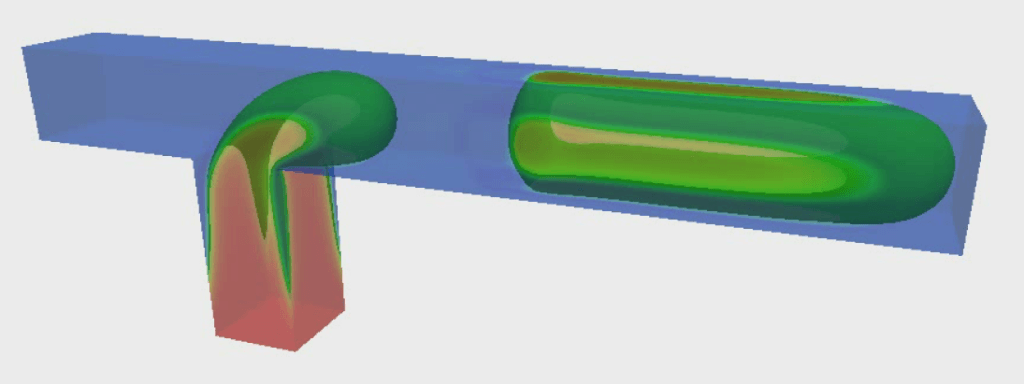
CFD provides a detailed description of the complex flow patterns and properties in the system. Due to the flexibility of the analysis, CFD has a wide range of applications.
Moreover, due to recent advances in CFD, accurate predictions can be made about the flow properties of complex systems, such as pipeline components interferences, separation systems, or heat exchangers. This can be used to predict the performance of the analyzed system.
Furthermore, CFD models are easily revised and can offer many detailed insights into flow physics. Therefore, CFD can be used to replace expensive and time-consuming methods such as experiments, or for systems where no measurements are possible such as in deep sea applications or applications using liquid metal.
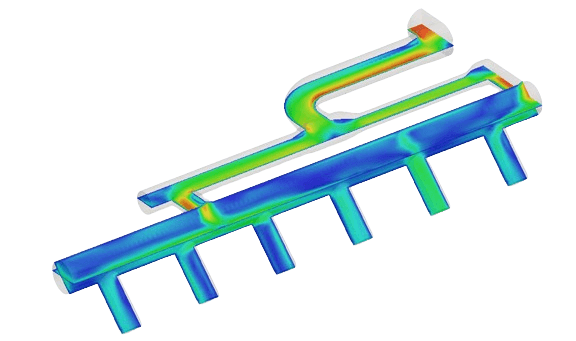
The types of analyses that can be performed in a CFD application are:
- Optimizing design to improve performance
- Validating initial design performance
- Determining the cause of performance issues or failures
- Feasibility study of new configurations, e.g. closely spaced filters or pumps
- Fluid-structure interaction analysis to solve the interaction of some movable or deformable structure with an internal or surrounding fluid flow
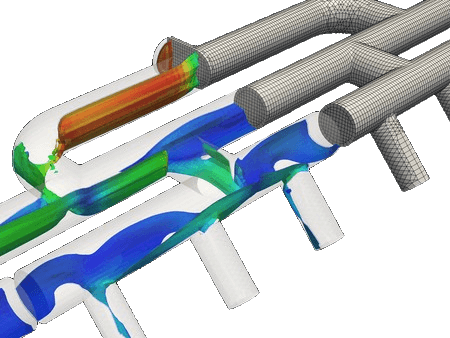
Discover how we can support your Computational Fluid Dynamics related projects
CFD For Industrial Applications
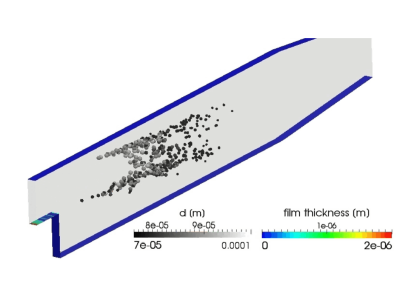
Multiphase Flow
Current 1D flow solvers struggle with capturing systems containing multiple phases due to their three-dimensional nature. CFD offers accurate insights into such fluid behaviors.
DRG has extensive experience in multiphase flow CFD analysis, covering various flow regimes, complex geometries, multiple scales, exotic non-Newtonian fluids, and dynamic geometries. We are confident in delivering precise results for any multiphase flow challenge.
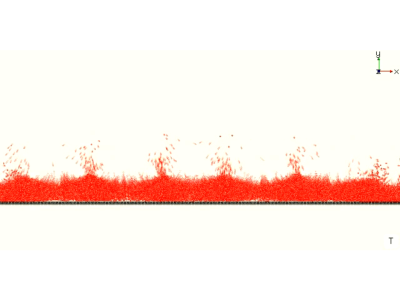
Particle-fluid Interaction
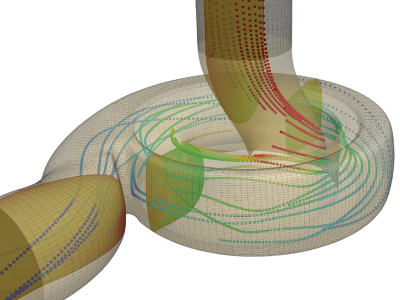
Structural Analysis in Equipment
In some cases, performing only a CFD analysis is not sufficient to approve the design of a system or to find the root cause of a failure. Structural analysis can also be an integral part of the analysis.
As Dynaflow Research Group is a multi-disciplinary engineering company, we can combine the results of a CFD analysis with a structural analysis.
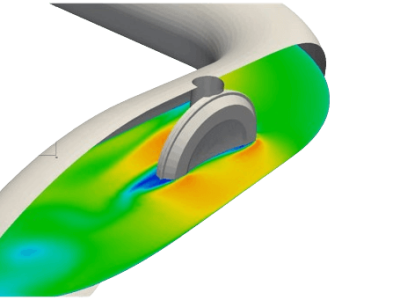
Optimization of In-Line Components
In-line components such as valves and orifices are key features of industrial installations. Using CFD the locations and design of these components can be optimized to mitigate possible failures or significant pressure drops due to hydrodynamic effects.
At Dynaflow Research Group we combine our extensive experience in working with these in-line components with parametric CFD models in order to optimize the design of your in-line components such as the following.
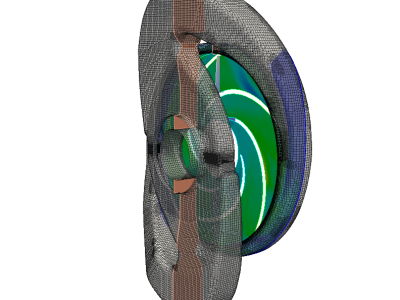
Other Applications
CFD analyses are not limited to the subjects discussed above. Many more applications are possible and are well represented in our project portfolio:
- Heat transfer in burners,
- Interference of pipeline components such as filters, valves pump inlet/outlet, etc.,
- Flow inside pumps and compressors.
CFD Case Studies
Heat exchangers are essential for transferring thermal energy between fluids at different temperatures, with applications in various industries. Dynaflow offers mechanical, thermal, and flow analyses for heat exchangers, using advanced technologies and industry standards. Since heat transfer and temperature fields in heat exchangers are strongly influenced by fluid flow, computational fluid dynamics (CFD) analyses are crucial for design.
CFD provides insights into flow patterns, predicting heat transfer performance for heat exchangers with diverse geometries and flow conditions, thereby enhancing efficiency. CFD is especially useful for evaluating non-uniform flow and unconventional geometries. Detailed flow information helps determine pressure drops caused by fluid friction, which affects the work required to maintain flow and improves design efficiency.

Special techniques make CFD studies feasible for tubular heat exchangers with many tubes by defining an equivalent volume filled with a porous medium. This simplifies the complex tube geometry and modifies flow equations to account for pressure loss and thermal exchange, enabling accurate, efficient flow analyses and optimization.
Beyond fluid behavior, CFD calculations provide information about fluid forces on the system. In cases where CFD alone is insufficient for design approval or failure analysis, Dynaflow incorporates structural analysis. As a multidisciplinary engineering company, Dynaflow integrates CFD and structural analysis for thorough heat exchanger evaluation, ensuring optimal performance and reliability.
The flow of water in a pipeline including a butterfly valve is analyzed. For unknown reasons, the installed valve was not able to fully open under operating conditions, with all pumps running. However, the valve fully opens when the system is not pressurized. Elbows were located close to both the upstream and downstream of the butterfly valve.
The objective of the study was to determine the relation between the opening of the valve and the dynamic torque acting on the valve, which is the torque exerted by the fluid. The computed torque versus opening diagram is then compared to the actuator capacity. For this reason, CFD analyses are performed for different angles. By inclusion of sufficient piping upstream and downstream of the elbows within the model, the effect of the elbows is taken into consideration. The CFD analysis performed on the valve under the specific operating conditions and the layout of the pipes has clearly shown that the torque acting on the valve remains within the permissible values.

Computational Fluid Dynamics (CFD) is also a governing tool to gain insight into the various features crucial for optimizing industrial mixers. One such feature is multiphase flow, a challenging aspect inherent to the three-dimensional nature of the flow in mixers. CFD is needed for the accurate assessment of fluid behavior within systems containing multiple phases, providing valuable data for evaluating mixer performance.
Impeller design is another critical aspect where CFD can play a major role. Through CFD analysis, different impeller designs can be examined, enabling the identification and prevention of dead zones. Additionally, the impact of varying impeller speeds on the mixing process can be precisely evaluated, contributing to the fine-tuning of design parameters.
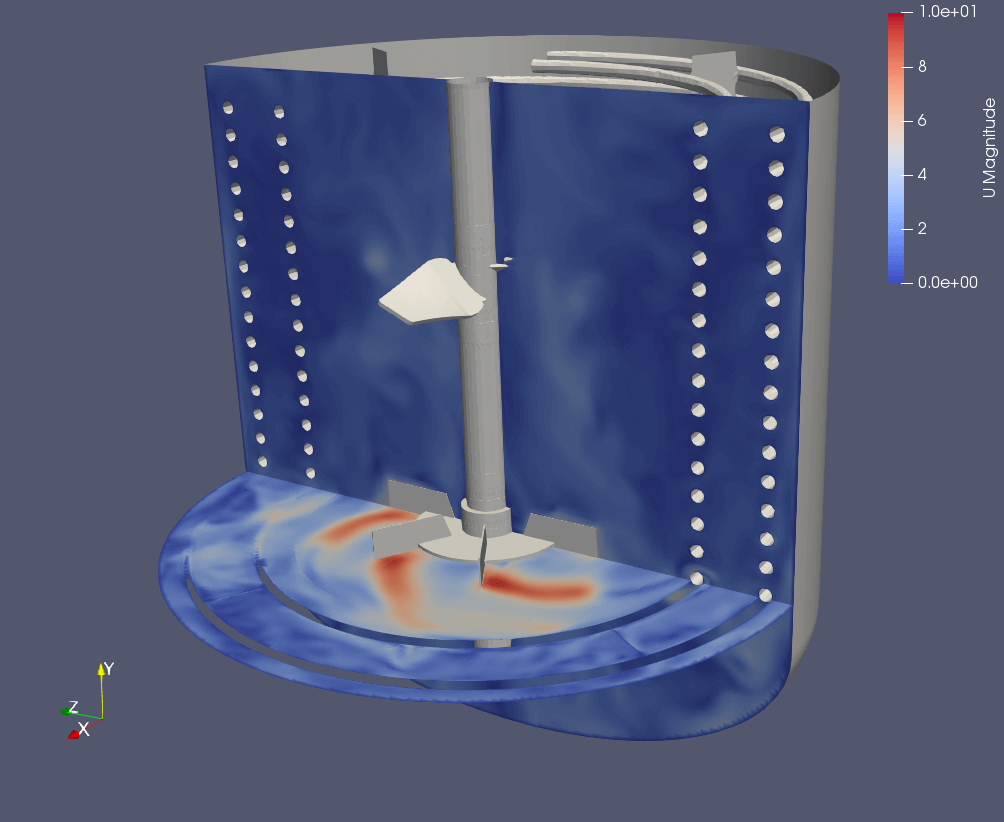
An often-underestimated facet in mixer design is fluid-structure interaction. Over its design lifespan, mixer components undergo wear and tear, affecting mixer performance. CFD simulations facilitate a detailed analysis of the loads acting on the mixing equipment. This comprehensive assessment includes the consideration of fluid-induced dynamic loads, such as vibrations, as well as the effects of static loads, such as thermal loads. Simultaneously, the eigenfrequency of the structure can be determined to identify and resolve undesirable oscillations, ensuring a robust design.
Our extensive experience includes a diverse range of expertise, spanning different flow regimes, intricate geometries, multiple flow scales, and the handling of non-Newtonian fluids. We are confident in our proficiency to deliver accurate results for any type of multiphase flow problem. We can use CFD as a powerful tool to optimize industrial mixer designs, addressing critical aspects with precision and ensuring superior performance across various operational conditions.
To design a high-performance finger-type slug catcher, fluid flow in the inlet header manifold must be evenly distributed among the fingers. Various configurations were evaluated based on the time-averaged mass flow at the finger inlets. The initial setup showed significant misdistribution.
Dynaflow’s CFD optimization study found that increasing the pipe diameter and adding an extra split in the main header pipe significantly improved flow distribution.

Discover how we can support your Computational Fluid Dynamics related projects
Software Solutions For Computational Fluid Dynamics
Helyx OpenFOAM
CFD analyses are done with HELYX OpenFOAM: a general-purpose CFD software package, based on an advanced open-source simulation engine developed by ENGYS using OpenFOAM technology. The CFD simulation engine, HELYX features an advanced hex-dominant automatic mesh algorithm with polyhydra support which can run in parallel to generate large computational grids.
